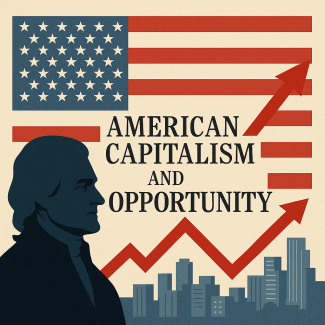
What Makes American Capitalism Different
The Uniqueness of American Capitalism
A recent Wall Street Journal op-ed (read here) reminded me how American capitalism has always stood apart. From “no taxation without representation” to Jefferson’s ideals of individual freedom, our system has encouraged risk-taking, innovation, and competition. That “permission” for creative destruction has fueled growth and opportunity though not without volatility. Markets in America can bring prosperity, but they can also bring setbacks.
Creative Destruction and Opportunity
Unlike economies shaped for centuries by inherited wealth, America largely democratized opportunity. Hard work, access to capital, and the rule of law created a system that continues to attract talent from around the world. Recently, we’ve seen this play out in the push-and-pull between tariffs, inflation, and AI-driven investment. For current context on those dynamics, see Is the Economy Weakening? and “Stagflation” & Tax Deadlines.
Flaws and Inequality
Our story also includes darker chapters. Slavery enriched a small elite while leaving many in poverty. Later, as the Industrial Revolution unfolded, inequality rose with the rise of “robber barons.” Today, we see echoes of concentration with modern tech giants. For a broader look at how markets handle uncertainty and concentration, see Nothing worse for markets than confusion and The consensus of economists.
Individual vs. Community
Compared to other democracies, the U.S. tends to have higher income and wealth inequality and lighter social safety nets. Yet our average per capita income remains higher reflecting how strongly the system rewards individual achievement over collective provision. That doesn’t mean every need is met; education and poverty relief remain work in progress. Still, America’s defining strength persists opportunity.
Related Reading
- Is the Economy Weakening?
- “Stagflation” & Tax Deadlines
- The consensus of economists
- Let’s start off with some good news, shall we?
- Beyond the Markets: Parenting, Mental Health, and Social Media
For those with access, you can view the full Wall Street Journal article that inspired this reflection here.
This website is informational only and does not constitute investment advice or a solicitation. Investments and investment strategies recommended in this blog may not be suitable for all investors. SAS Financial Advisors, LLC and its members may hold positions in the securities mentioned within this newsletter. SAS Financial Advisors, LLC is not responsible for any third-party content referenced.
The SAS Newsletters are posted weekly on the SAS Blog: https://www.sasadvisors.com/blog

